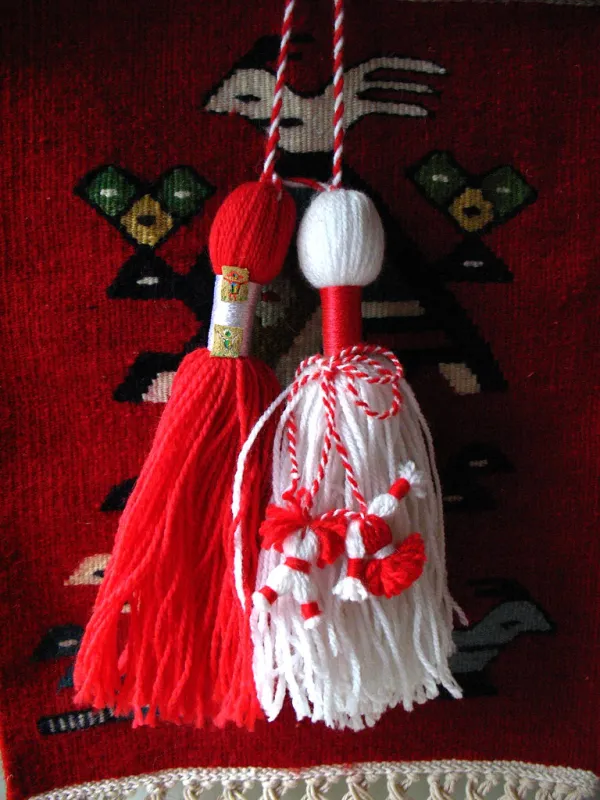The first martens, with which people fastened themselves and cattle, were only made of red woolen thread. It was a kind of amulet that protected against all kinds of evils and brought health, fertility and luck. In later times, people also twisted white, again from wool, into the red thread. In addition to wool, cotton thread can also be used to make martenitsa. The white color is a symbol of purity, joy, beauty and the new beginning, and red - of fire, the sun, victory and blood = life.
In some parts of the country, other colors are added to the main colors. This is most characteristic of the Rhodope Mountains and Sofia. Yellow, green and blue threads are also woven into the Rhodope martenitsa, and in Shopluka the main colors are red and blue. The color blue is a symbol of sky and water, of divine eternity and of aristocracy. Green is associated with health and fertility.
The thread must be twisted to the left. Somewhere while twisting the threads, stringing snail shells, beads or money - against lessons and for well-being. The main materials are wool and cotton. The wave symbolizes the middle world and is an intermediary between the worlds. The wool is of animal origin - a symbol of the wild and the base. But it is ennobled by human labor after spinning, knitting, dyeing, and is already a sign of controlled chaos. There is another symbolism in this material. The cosmic order is top – middle – bottom. The elements of this order are linen (the world of the upper, of the holy - wool (the world of the middle, of the earth) - leather (chaos and the lower world).
The twisting of white and red is a symbol of the masculine and feminine in Bulgarian traditions. Connecting the two threads means the birth of a new life. One of the most characteristic types of martenitsa is a male and female figurine, joined with twisted white and red thread and bearing the ancient Bulgarian names Pijo and Penda.
The symbolism of colors is very important and is not accidental at all. Since red is the most basic color, a symbol of blood and life, only women of childbearing age were allowed to wear this color in their clothes, and it was absolutely forbidden for old women. It is the woman who gives birth to life, therefore the female figure of the man-woman pair in the martenitsa is red and the male figure is white. The man in this couple is white. White is upper - holy - right - correct - heavenly, the opposite of lower - primitive - left - wild - earthly. No, there is no inequality between men and women in ancient society. Rather, the woman is the materialization of things - the birth, and the man is the headship - the order of the hierarchy. This order was very important for human survival and nobody opposed it. Even in the very intertwining of the red and white thread there is something very intimate and loving that binds man and woman. The "white" man is the usual image for the ancient Bulgarian community. It has been proven that the typical clothing for men in our lands since the end of time is the "white wool" - with the natural color of the wool. Black men's clothing is an Eastern influence that crept in later.
How the martenitsa is worn is also important. If it is tied on the wrist, it is like a prayer to bless the fruits of the labor of this hand, and if it is pinned to the heart, it expresses the person's desire for strength and life.
© 2023 Iliana Dechkova

